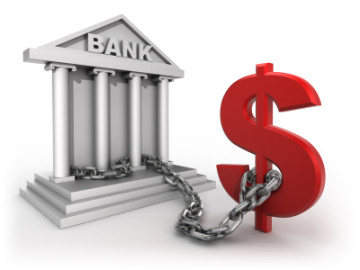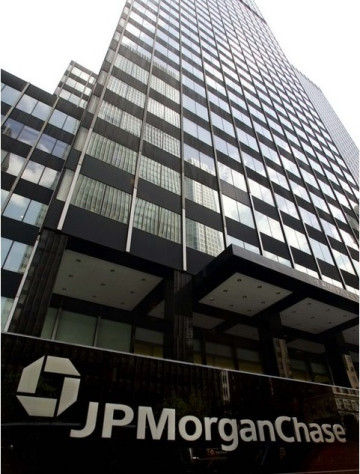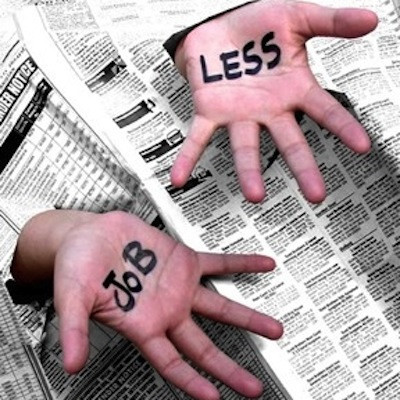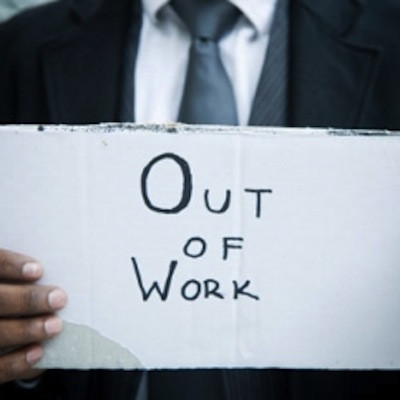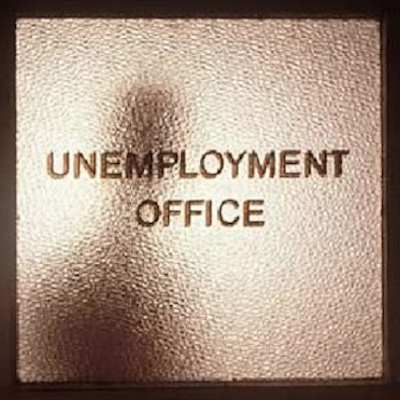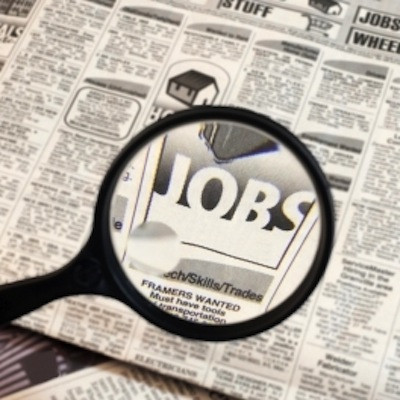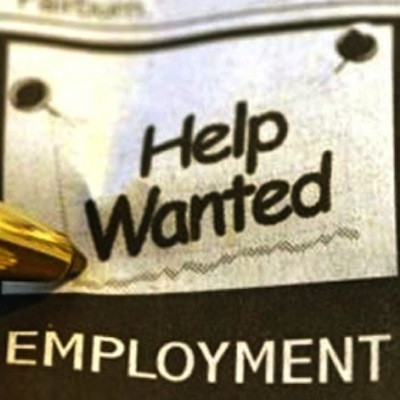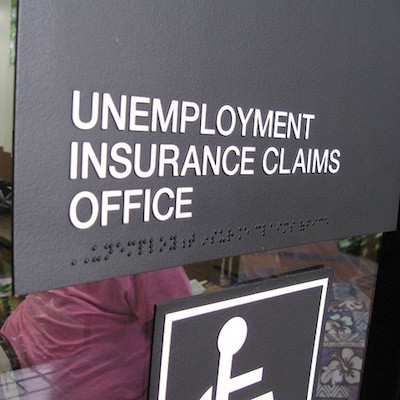State of RI Slams Unemployed with High Fees Tied to JPMorgan Chase
Thursday, March 13, 2014
A New York-based bank with no branch locations in Rhode Island has saddled recipients of unemployment benefits with hidden credit card-style fees as much as five times what state officials say they should be, a GoLocalProv investigation has found.
About a fifth of all Rhode Islanders on unemployment receive their benefits through an electronic payment card (EPC) similar to a debit or credit card that is issued by JPMorgan Chase Bank. The cards are meant to provide easy access to benefits for thousands of recipients, in most cases with no fees and, in the few instances where a fee is charged, the maximum would be $5 for teller withdrawals at a bank, state and JPMorgan Chase officials said in interviews.
Benefits recipient faced fees five times the official rates
GET THE LATEST BREAKING NEWS HERE -- SIGN UP FOR GOLOCAL FREE DAILY EBLASTBut one recipient of unemployment benefits tells GoLocalProv that when he tried to withdraw cash from his card he faced fees that he described as five times that.
James Safford, of North Scituate, was periodically on unemployment benefits in 2012 and 2013 until the federal extension on the benefits was cut by Congress. Safford, who had worked as an archeologist for a cultural resources management firm, opted for the EPC card last December after a state employee at the unemployment benefits calls center told him he would receive his benefits faster that way. (The alternative is direct deposit through Citizens Bank.)
The card can be used to make unlimited debit card-style purchases at retail stores and online for bills, but Safford found there was a catch when it came to making cash withdrawals. When he tried to withdraw more than $100, the ATM he was using would not let him. The only way he could obtain more cash, Safford said, was by making a withdrawal from a bank teller.
But Safford soon discovered that there are no Chase branch locations in Rhode Island. In fact, the closest branch location—at least in terms of mileage—is on Montauk on the eastern point of Long Island. The closest in terms of driving distance is in New Haven, about an hour and a half away.
“You can’t go to a Chase Bank. The only place you can go is another bank and deal with their fees,” Safford told GoLocalProv.
At the other non-Chase banks, the withdrawals were treated like cash advances on a credit card—even though the funds should have already been available—and the associated fees were “astronomical,” according to Safford. At Bank Rhode Island, Safford was told he would be charged $25 to receive a “cash advance.” At Citizens Bank, the charge was nearly $15.
Carne Ross, an Occupy Wall Street member who has studied banking issues, said the high fees reflect a national trend. “Debit and cash cards from the big banks are usually a rip-off, with lots of hidden charges. Since these cards are used by those without bank accounts, it’s a direct rip-off of the poorest and most needy for the benefit of the big banks,” Ross said.
State, bank officials dispute claim
But Safford’s experience with his EPC card was at odds with the explanation of fees provided by state and bank officials. An official list of Chase fees provided by officials at the Department of Labor indicated that, for most transactions listed, there simply were no fees, thanks to a new contract the state negotiated with Chase, according to Matthew Weldon, the assistant director of the department.
The highest fee a recipient could face, according to a document provided by Weldon, is $5, for withdrawals of cash from a bank teller. And that was only for the second withdrawal during a pay period. The first is free.
However, the document only identifies fees that JPMorgan Chase will be charging for teller withdrawals, not necessarily any fees that will be charged by another bank. The document also does not specify what limits, if any, the state has imposed on daily cash withdrawals on the cards.
A spokesman for JPMorgan Chase said there are several ways recipients can access their benefits without incurring any fees. First, recipients can use their cards like a debit or credit card to buy food, clothes, or other items at a retail store. Second, the spokesman claimed they can make “unlimited cash withdrawals” at any Bank Rhode Island and Allpoint ATMs with no fees. Third, he said recipients can withdraw money from a bank teller at least twice a month for free.
“There’s plenty of ways for cardholders to get their funds for free,” said the spokesman, Mike Fusco.
Bank provides service for ‘free’ to the state
When Weldon was asked about Safford’s experience he responded in an e-mail message: “I don’t understand the fees to work the way described in your e-mail. Chase would have to answer that.”
Fusco denied the high fees were a possibility, describing Safford’s account as “not accurate.” When asked for an official Chase bank document listing what it charges in fees, Fusco said he did not have one.
Chase has a five-year contract with the Department of Labor and Training and the Department of Human Services and also provides similar cards for recipients of temporary disability benefits and food stamps.
The service is provided to the state at no cost, according to a May 15, 2012 contract obtained by GoLocalProv. Instead, Chase recovers its expenses—which Fusco declined to disclose—through interchange or “swipe” fees Chase charges for other banks where its cards are used and fees that are paid directly by the cardholders, according to Chase bank.
“Debit cards exist for the fee income they generate. That’s the point. A prepaid debit card has no bank account behind it, so fee income is all the bank gets. Do you think they do this for free?” said Tom Sgouros, a local progressive policy expert who has recently published a book on banking and payment systems.
Sgouros was not surprised that the officially published list of fees does not account for all the fees a customer might actually face.
“There might be a forgiving schedule of fees published, but what about the fees that aren’t published, but are still common? You have to use this debit card like a credit card at a cash register and sign the slip to avoid the fees. Would you remember to choose that? There is no fee for the first withdrawal at a bank teller, but what about the second? Does the teller remind customers that there will be a fee? What are the overdraft fees mentioned in the fine print? Does that mean I get charged a fee when the debit card simply declines a purchase?” Sgouros said.
State officials, on the other hand, were surprised to hear about Safford’s experience. Weldon and other administrators at the Department of Labor and Training said they were not aware of any complaints over fees since the new contract took effect in June 2012 and they said GoLocalProv’s inquiry was the first they had heard about a benefit recipient claiming to have been hit with high fees.
As a result of the contract change, Weldon says the state was given a favorable ranking by the National Consumer Law Center, which, in a 2013 report, declared that, “Rhode Island jumps from a ‘thumbs down’ to ‘thumbs up’ as the card stopped charging for ATM balance inquiries, began offering unlimited withdrawals at in-network ATMs, and eliminated point-of-sale fees. The card also offers the most free out-of-network withdrawals of any state: two per weekly deposit."
“All customers should be cognizant of the information that we put on our Web site and that we’ve made available, that there are ways to use the system without being charged fees,” Weldon added.
The department publishes a how-to-guide for avoiding fees online (available here) and state officials said Chase bank also provides similar information to card recipients.
But Safford says he was provided little guidance. “There’s no information. There’s no one telling you this information. You just have to figure it out as you go,” Safford said.
Problems from beginning to end
Safford originally received his unemployment benefits through a direct deposit into his private bank account. But Safford found that when he changed his personal bank accounts—first as a result of a divorce, and then because of deposit delays at the second bank—it took about a month for the changed information to go through at the state level.
After the second change, Safford said he was told by a state call center employee that he could speed things up by just getting the EPC card. Instead of waiting more than a month to receive benefits, it would take just a few weeks to card the card, Safford was told, in a conversation with a state call center worker in early December.
The new card arrived in mid-December—and that’s when the problems with it began, according to Safford. He discovered that the card had no funds on it yet, so he tried to call the Chase customer service number on the back. Safford said he reached an automated service with “limited options” and “zero chance of talking to a person.” “It’s all automated and every option explains something—then [it] hangs up,” Safford said.
He also tried calling the Rhode Island Department of Labor—this time using a direct line number to an administrator for the EPC cards. Talking to a person didn’t change much: “She gave me zero information and just wanted me off the phone,” Safford said. He was told he would have to submit an online request for a call back from department’s call center—which Safford says can take up to four weeks. (In an interview, state officials said that Safford was right to call Chase first, but they said the department has a call line dedicated to handling complaints about Chase’s customer service: 401-462-8628.)
While waiting for his call back from the state, Safford also waited for the funds to show up in his account, which finally happened just days before the end of the year, when Congress failed to vote on an extension of federal unemployment insurance, resulting in a loss of benefits for an estimated 1.3 million people across the country.
For Safford the last straw came when he was ready to spend the last chunk of funds on the card. In mid-January, he said he needed to pay an $80 bill. He had about $60 left on the EPC card and needed the full $80 to pay the bill. Safford, who had been working part-time and collecting partial unemployment benefits since the summer, thought he would simply be able to deposit $20 from one of his paychecks onto the card.
Safford searched online for the closest Chase-affiliated ATM where he could make the deposit. He found one in Smithfield in a convenience store, but the clerk told him he wouldn’t be able to make the deposit there. When Safford drove to Chase ATMs in Cranston he didn’t fare much better. That’s when Safford realized he would have to go to a Chase branch to make the deposit—but the closest one he could find was in Montauk.
Weldon and other state unemployment benefits administrators told GoLocalProv that there were never meant to be bank accounts attached to the card. The service was not designed for recipients to deposit other money and combine it with unemployment benefits, they said.
Safford says he was told something different by the call center employee who urged him to get the EPC card in December. “When they’re selling you on the card option, they tell you that it’s a debit card and that you can keep it, take it, and use it like a debit card and you can make it your only,” Safford said. Plus, once he got a job, he said he was told that he “could continue to use [the EPC card] like a debit card and make direct deposits onto it.”
“It was such a hassle that I got rid of the card and just stopped filing for my benefits,” Safford said. “I basically felt like the card and the call back delay time was done purposely to deter me from collecting benefits. If the road gets bumpy enough people will turn around and go back.”
“It’s unfortunate that he stopped filing because of his experience and we’d like to see if there’s any remedy for that,” Weldon said, when asked for comment. “I suggest that anybody in a similar situation rather than make a decision like stopping his benefits contact the department to see if we can work it out.”
Just as Safford was about to put the whole business behind him, he got a call in mid-January.
The caller was an employee at the unemployment benefits call center.
“I’m like, ‘The money was put on my card three weeks ago and my benefits were canceled three weeks ago, so why are you calling me?’” Safford recalled. “And they were like, ‘Well, because your name just came up on my queue to give you a call back.’ That’s how far behind they are. These benefits had been canceled for three weeks and they were still calling me back.”
Related Slideshow: 8 Discouraging Facts About Unemployment in RI
Related Articles
- 8 Alarming Facts About Unemployment in Rhode Island
- RI 1 of 5 States that Didn’t Improve Unemployment Rate in November
- State Report: 38 Studios Debacle, Unemployment Dips & Pot Dispensaries
- Unemployment Drops, but RI Lost Jobs in September
- Unemployment Still at 11 Percent
- NEW: Cicilline Web Platform for Sharing Stories, Extending Unemployment Benefits
- NEW: Unemployment Numbers Dip Slightly
- NEW: RI Unemployment Rate Down Slightly in November
- NEW: Rhode Island’s Unemployment Rate Drops to 46-Month Low
- State Report: Chafee’s Budget, Unemployment Rate & Gay Marriage Vote
- DLT Director: RI’s Unemployment Rate Won’t “Turn Around Overnight”
- RI Faces Loss of Federal Unemployment Benefits
- State Report: RI’s Disastrous Unemployment Rate, Gun Safety & PC Ponies Up
- Unemployment Over 10.5% for 40th Straight Month
- What To Learn From The Unemployment Rate
- NEW: Reed, Whitehouse Seek to Preserve Unemployment Insurance
- NEW: Unemployment Remains At 10.9 Percent
- NEW: RI Unemployment Rate Drops To 9.4%
- NEW: Rhode Island’s Unemployment Rate Now Worst in Nation
- Unemployment Above 25% for Rhode Island Youth
- Horowitz: Restore Unemployment Benefits to Long-Term Unemployed
- RI Unemployment Inches Down
- State Unemployment Rate Dips
- Unemployment Rate Dips Down Slightly
- Just How Bad is RI’s Unemployment? See This Chart
- NEW: State Unemployment Drops to 10.9 percent
- NEW: Unemployment Remains at 10.4%
- NEW: RI Unemployment Rate Drops to 9.2 percent in January
- NEW: Rhode Island’s Unemployment Rate Drops Again
- NEW: RI DLT Reports Lowest Unemployment Rate Since 2008
- RI Unemployment Rate Declines to 11.5 Percent
- U.S. House Fails to Extend Federal Unemployment Benefits
- Unemployment Rate Drops to 10.8 Percent
- LEGAL MATTERS: Navigating the Unemployment System
- NEW: Unemployment Below 11 Percent for the First Time in 21 Months
- NEW: Unemployment at 10.8% in RI
- NEW: RI Unemployment Rate Increased in December
- NEW: Unemployment rate falls to 10.2 percent
- NEW: RI Qualifies For Increased Federal Unemployment Funding
- RI Unemployment Rate Edges Back Up
- URI Expert: Unemployment Rate is Better Than You Think
- Unemployment Rate Spikes Again: 10.8 Percent
- Major Unemployment Assistance Underway for those Affected by Hurricane Sandy
- NEW: Unemployment Dips Slightly in State
- Providence Area Number 1 for Hispanic Unemployment
- NEW: Rhode Island Unemployment Climbed to 9.1 Percent for August
- RI State Report: EDC Nominees, Unemployment & An E-Cigarette Ban
- 11.2 Percent Unemployment: Is There Any Hope For RI?
- RI to Get $15.6 Million for Unemployment Program
- Unemployment - How is Rhode Island Doing Against New England
- Unemployment Rate Spikes in Rhode Island
- NEW: 103k Jobs Added Nationwide; Unemployment Remains 9.1 Percent
- NEW: Unemployment Down to 10.5 Percent
- Providence’s Hispanic Unemployment Rate was Worst in US in 2011
- NEW: Rhode Island Unemployment Rate Increases
- RI State Report: Unemployment, Gay Marriage & Fox’s Economic Plan
- Aaron Regunberg: Rhode Island’s Unemployment Crisis Hurts all Workers
- Report: RI Unemployment to Remain Above 9% Until at Least 2014
- Unemployment Benefits Face an Even Bigger Cut
- Unemployment Rises Again: 11.1 Percent
- NEW: Chafee Announces Disaster Unemployment Assistance Sessions
- NEW: Unemployment Down, but State Lost 1,200 Jobs in October
- NEW: Rhode Island Unemployment Rate Up For May 2013
- RI Unemployment Higher than Originally Reported: Up to 9.3 Percent
- Caprio: State Can Cut Unemployment in Half
- State Audit Details Pension Liability, Unemployment Fund Deficit
- Unemployment Down, but Situation still Severe
- Unemployment Rises to 11 Percent
- NEW: Cicilline Urges Extension of Unemployment Benefits
- NEW: Unemployment Drops to 10.4 Percent
- NEW: RI Unemployment Numbers Dropped to 8.8 Percent in April
- NEW: Rhode Island Unemployment Remained at 8.9 Percent for June
- Rhode Island Owes Feds $200 Million for Unemployment Benefits



